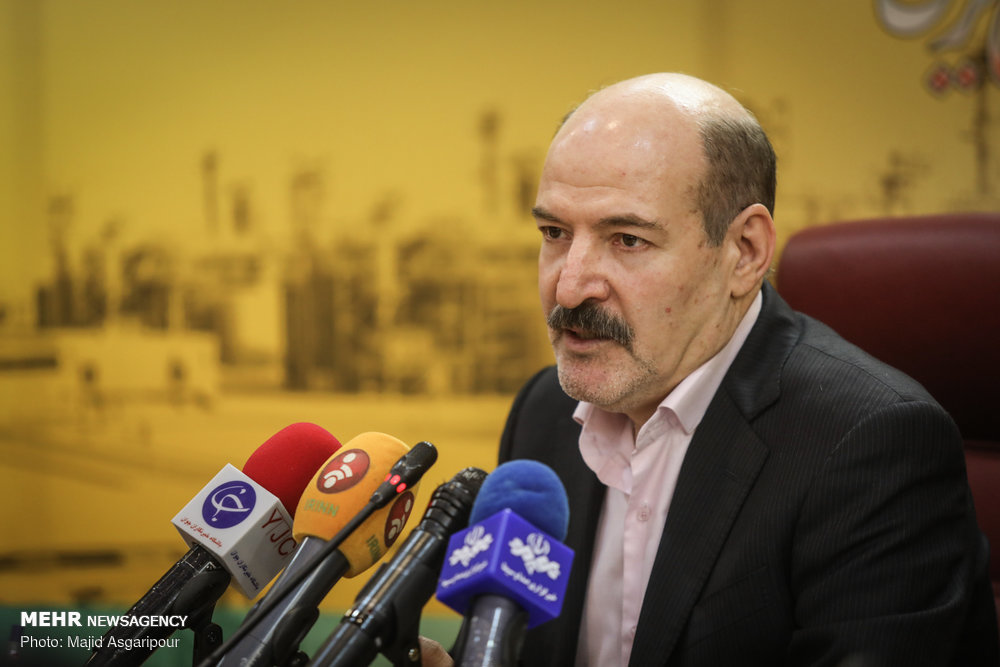Iran’s daily gas output hits 800mcm: NIGC managing director

TEHRAN- In a press conference on Saturday, the managing director of National Iranian Gas Company (NIGC) announced that daily production of gas in the country has reached 800 million cubic meters (mcm).
Hassan Montazer Torbati also said that of the total produced gas, some 25 percent goes to household consumption, 37 percent is supplied to the power plants, 30 percent is used in the industry sector, four percent used as CNG and four percent is for other consumptions.
The official noted that household subscribers used about 90 percent of the gas produced in the country some years ago, but in the recent years, especially since the Iranian calendar year 1380 (March 2001-March 2002) while most areas of Iran have been supplied with the natural gas, the country has turned some part of its approach in gas sector toward exports and also supplying feedstock to the petrochemical units.
Telling the history of Iran’s gas industry, the official mentioned the year 1380 a turning point in this sector.
He said gas industry in Iran entered a new era since the Iranian calendar year 1367 (March 1988- March 1989) when production of gas in South Pars gas field (Iran shares with Qatar in the Persian Gulf) started. Then gas industry entered the golden years until 1380 which was a revolution in this sector.
Gas supplied to 93.6% of population
Montazer Torbati further said that 93.6 percent of Iran’s population enjoy natural gas; saying that gas is supplied to 97 percent of people in the urban areas and 82 percent of people in the rural regions.
He said 1,139 cities and 27,000 villages enjoy natural gas in the country, stressing that the process of gas supplying to the villages will be accelerated in the coming years to materialize the objective of gas supplying to all villages with over 20 families as soon as possible.
The official further put the daily transferring capacity of gas network at 750 mcm.
He also said that supplying gas to the power plants is estimated at 70 billion cubic meters in the current Iranian calendar year (ends on March 20, 2019).
“Considering the expedited process of gas supplying for domestic consumption, we are focusing more on the exports and also feedstock supply for the petrochemical units”, he noted.
“Consumption pattern management will be of high significance for us in the coming years”, he emphasized.
Gas export a turning point for Iran’s economic, political ties
Elsewhere in his remarks, Montazer Torbati said that exports of gas to other countries while brings revenue for Iran, expands the country’s political relations with those countries; so it’s been a turning point.
Answering to a question about gas exports to Iraq, the official said: “Exports to Iraq is already done through Baghdad and Basra and the payments have been already made in euros as mentioned in the contract, but for the next purchases the central banks of the two countries are the bodies to decide in which currency the payment will be.”
And replying to a question about the recent status of Iran-Pakistan gas pipeline (IP Gas), he said: “We are ready to export gas to Pakistan, but they should complete their side of the pipeline and as heard recently they have negotiated with some companies to do the job. We hope that the private sector of Pakistan comes to make investment to make the project go forward”.
Iran to become 3rd producer of gas odorant in world
Montazer Torbati further announced that a gas odorant production unit is being ready for operation in Assaluyeh (southwest of Iran where gas extracted from South Pars is refined) and it will be inaugurated officially by the president in the near future.
Just two countries, France and Russia, are producing gas odorant, mercaptan, in the world and by putting the mentioned unit into operation Iran will be the third producer.
Iran used to import the material from France, according to Montazer Torbati.
Mercaptan is used in the natural gas industry as an odorant, due to its ideal compatibility with methane. Its characteristic "rotten eggs" smell is widely known by natural gas customers as an indicator of a possible gas leak, even a very minute one.
Leave a Comment